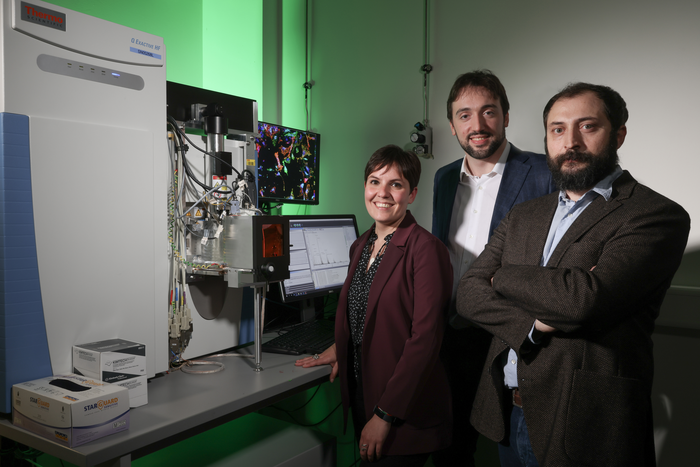A team of international scientists, led by Gioele La Manno, PhD, and Giovanni D’Angelo, PhD, at the Ecole Polytechnique Federale De Lausanne’s (EPFL) school of life sciences reportedly has determined for the first time that one of the internal factors to determining a cell’s fate is its production of lipids. The researchers published their study (“Sphingolipids control dermal fibroblast heterogeneity”) in Science.
Working on skin fibroblasts, the researchers combined two techniques to sort cells into lipid-producing profiles. They used high resolution mass spectrometry imaging, which allowed them to visualize the distribution of specific lipid inside each cell, and single-cell mRNA sequencing, which allowed them to determine the gene expression profile of each fibroblast—a sort of ID card of the transcriptome—and put each cell into a transcriptional subpopulation.
“Human cells produce thousands of lipids that change during cell differentiation and can vary across individual cells of the same type. However, we are only starting to characterize the function of these cell-to-cell differences in lipid composition. Here, we measured the lipidomes and transcriptomes of individual human dermal fibroblasts by coupling high-resolution mass spectrometry imaging with single-cell transcriptomics,” write the investigators.
“We found that the cell-to-cell variations of specific lipid metabolic pathways contribute to the establishment of cell states involved in the organization of skin architecture. Sphingolipid composition is shown to define fibroblast subpopulations, with sphingolipid metabolic rewiring driving cell-state transitions.
“Therefore, cell-to-cell lipid heterogeneity affects the determination of cell states, adding a new regulatory component to the self-organization of multicellular systems.”
The first thing the study revealed was that dermal fibroblasts can show multiple lipid groups, or lipid compositional states, which the researchers dubbed lipotypes.
Cell states are intermediates in the process of cell differentiation where state switches precede terminal commitment, according to the authors. But there was a clue: each lipotype turned out to correspond to specific transcriptional subpopulations in vitro and to fibroblasts from different skin layers of the skin in vivo.
Searched for biomarkers
The question now was what markers could be used to identify the different lipotypes. Given their correlation with the fibroblasts’ transcriptional groups, the researchers proceeded to isolate metabolic pathways that could account for this connection.
They found that the major markers of the different lipid compositional states are a family of fat molecules called sphingolipids, which are named after the mythical Sphinx. Sphingolipids are involved in cell-to-cell communication, as well as protecting the cell’s outer surface by forming barriers on its membrane.
At this point, the researchers discovered that the different lipotypes influence the different responses that cells have to external stimuli from their microenvironment that push them into different cell fates, even if the two original cells were identical. In fact, the researchers found, it is possible to entirely reprogram a cell’s fate by simply manipulating its sphingolipid composition.
In the final leg of the study, the team found that lipid composition and signaling pathways are wired in self-sustained circuits, and it is these circuits that account for the differences between metabolism and gene transcription among fibroblasts.
The key molecule here is fibroblast growth factor, or FGF2, a signaling protein that is involved many processes, such as embryonic development, cell growth, morphogenesis, tissue repair, and even tumor growth and invasion. In the context of this study, sphingolipids were found to regulate FGF2 signaling by using two different types of sphingolipids as positive as negative regulators.
“We uncovered an unexpected relationship between lipidomes and transcriptomes in individual cells,” write the authors, referring to a cell’s complete profile of lipid production. “Lipidome remodeling could work as an early driver in the establishment of cell identity and, following lipid metabolic trajectories of individual cells could have the potential to inform us about key mechanisms of cell fate decision. Thus, this study stimulates new questions about the role of lipids in cell fate decisions and adds a new regulatory component to the self-organization of multicellular systems.”



